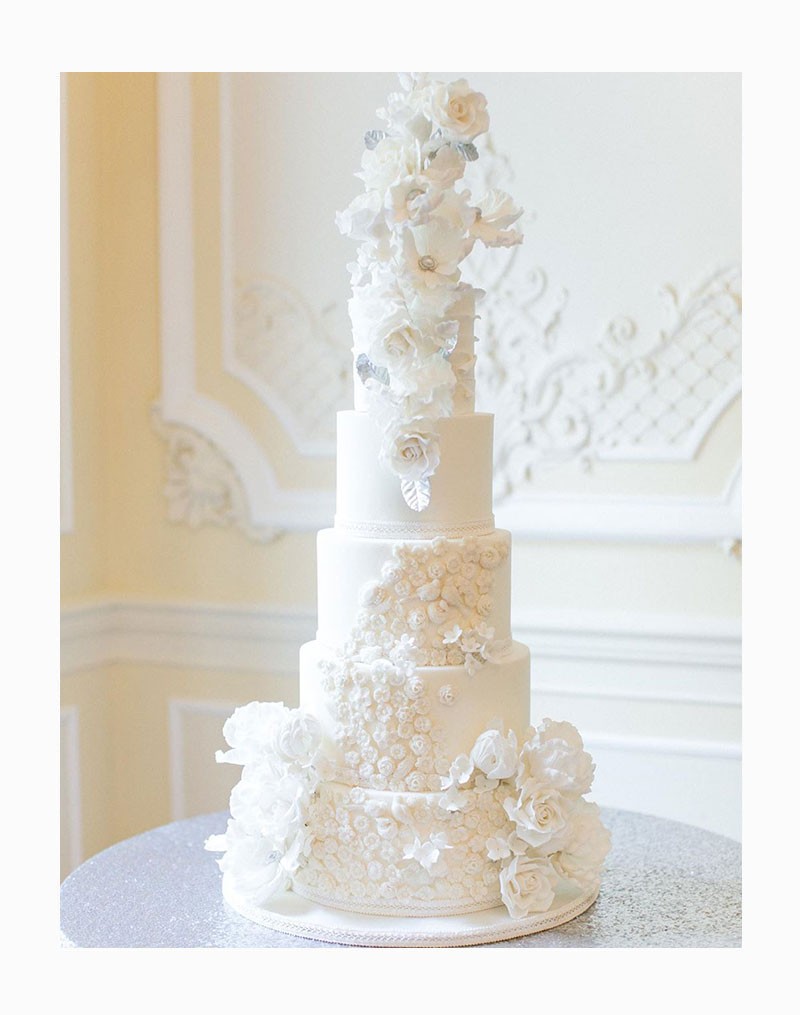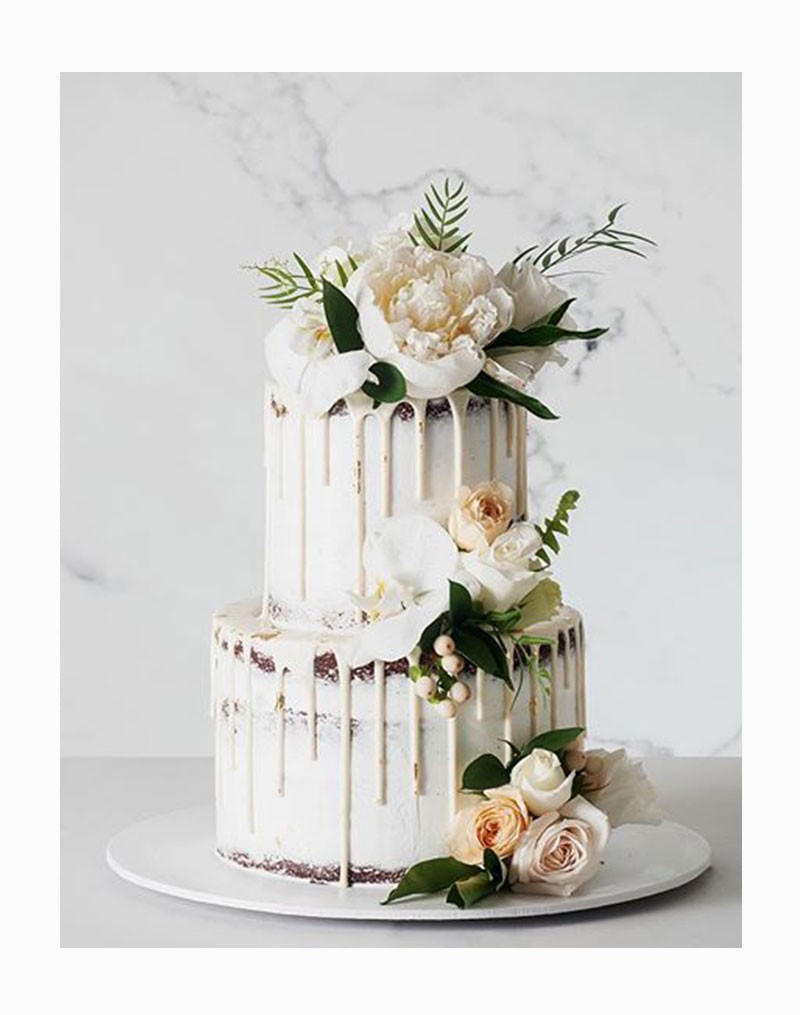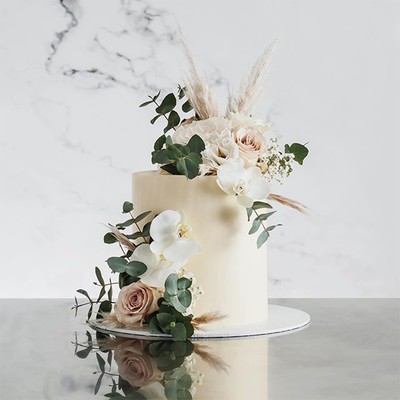
Wedding Cake Dos & Don’ts
DO A Tasting
“The flavour of any cake is its foundation. It sets the scene for a fantastic design and can be a part of your wedding story,” says Fen Bolodeoku, owner and creative designer of MonAnnie. “The tasting is an opportunity to experience different flavours firsthand – to savour different nuances and textures, be immersed in the different emotions they evoke, and decide which of these you’d like your guests to experience.”
“One of the most pleasurable parts of wedding planning, the cake tasting is a way for couples to see if they like and trust the designer, and that the cake suits their palate,” adds Elizabeth Solaru, founder and CEO of Elizabeth's Cake Emporium. “There are a number of considerations couples need to take into account when going for a tasting – their wedding menu and menu style; allergies; any special dietary requirements; their personal preferences and typical crowd-pleasing flavours. For instance, couples might want to pair a fish menu with a luscious lemon cake, or a duck menu with a chocolate and cherry wedding cake. You might even decide to be a lot more adventurous, and your inspiration could come from childhood memories, such as favourite sweets or ice-creams. There are no hard and fast rules.”
DO Think About Style
“I ask clients to tell me all about their venue and their vision for their big day so I can create a cake that fits their vibe,” says Sarah Hardy, owner of Hebe Konditori. “Traditionally, the wedding cake is one of the focal points of the day, so couples want it to reflect the rest of the look. There are endless styles out there, but if a couple comes to me for a wedding cake it’s probably because one of my creations has caught their eye.”
“My wedding cake style is one of natural elegance,” says Suzanne Brady of Cove Cake Design. “Cakes should be modern, stylish and most importantly, shouldn’t date. Each of my creations starts with delicious flavours, and the same attention to detail carries through to my signature botanical decorative style. A wedding cake is an important part of the day, and is often the centrepiece of an event – one which is admired by guests and the photographer, alike. The styling and set-up is crucial, so ensure it's sitting comfortably in its surroundings. A trendy cake could look amazing in a cool city wedding venue, while a classic tiered cake is more appropriate for an ornate function room. Sometimes the architectural details or colour palette can be the best source of inspiration.”
“Personalisation of luxury wedding cakes has taken a huge leap forward as couples become increasingly keen to showcase their style on social media and create ‘Instagram-worthy’ images. Post Covid-19, smaller gatherings will likely lead to more assorted single-tier cakes, mini cakes and small sweet treats. Also, with weddings currently much smaller, you can choose a wedding cake with lots of detail and textural elements to make it more memorable,” advises Elizabeth.
Fen adds: “If we think about a wedding as a love story made up of different elements – venue, flowers, stationery, clothing and so on – your cake is a part of that, and is most beautiful when it works in harmony with everything else. For instance, a large marquee or ballroom can lend itself well to a tall multi-tiered cake, while a more intimate venue may favour a smaller cake with intricate details inspired by the venue’s architecture.”
Semi-naked drip cakes are also popular with couples keen to bring an element of boho-chic into their wedding (see Cake Ink for inspiration). Meanwhile, botanical cake artist @CynthiaIraniDesign takes floral cakes up a level with her incredible 3D painted cakes – beautiful works of art to complement any special day.
DO Consider Budget
“When it comes to luxury wedding cakes, pricing is subjective and depends on a number of factors including the complexity of the design, size, number of servings and the type of set-up required,” says Elizabeth. “A cake with thousands of hand-made sugar flowers requiring a lot of man hours and skill, so will obviously cost more than a simple buttercream cake with fresh flowers.”
“Clients are paying for time and ingredients, so size and the amount of detail dictates the cost,” Sarah says. “Something like matching fresh flowers on the cake to the wedding bouquets would be extra, for example. Or something particularly elaborate, like a flock of meringue swans, would be more. Bespoke, off-menu flavours can also add up, as this requires more testing beforehand. Size-wise, the couple needs to decide whether they are planning to have dessert-sized slices as part of the wedding meal or whether they're planning on guests taking away smaller pieces.”
Fen adds: “Mini cakes are a lovely option. However, smaller cakes can sometimes be more difficult to decorate, so it may not actually save you money in the long run. We advise deciding on the size on your cake based on the number of guests you are having, and the overall look you want to achieve.”
DO Weigh Up The Icing
“Buttercream cakes look beautiful and are delicious. However, they may not hold up well in a hot room or climate. Fondant can be quite sweet, but it is more sturdy and provides a protective layer for the cake underneath. The outer icing of the cake tends to be purely for presentation, too. Most cakes on the inside are made up of layers of sponge and buttercream, regardless. The choice between buttercream and fondant is more of an aesthetic one, but bear in mind the weather,” advises Fen.
“Buttercream cakes are fun, delicious and perfect for relatively informal wedding receptions. Great as both a filling and covering, a buttercream-covered cake can have beautiful textures and when covered with some gold leaf, look really decadent. Fondant or sugar paste-covered cakes have a smoother finish and the base can be used to showcase lots of exciting sugar work,” says Elizabeth.
“I personally much prefer the taste of buttercream cakes,” says Sarah, “However, If you’re having a wedding in the height of summer, in high heat, go for a fondant-covered cake as they’re much more stable and you won’t have any issues with melting. You can still have lots of lovely piping details on a fondant-covered cake and they tend to look more polished.”
DO Think About Flavour
“The flavour combinations that tend to be popular are triple chocolate and raspberry ripple, with luscious lemon coming in a close third. However, we are seeing the rise of flavours like the Tuxedo (layers of white and dark chocolate cakes filled with layers of white-chocolate buttercream and chocolate ganache), Chocolate Baileys (chocolate cake soaked with Baileys Irish Cream and filled with a Bailey’s chocolate truffle buttercream) and the ubiquitous salted caramel. My personal favourite is our luscious lemon for its tanginess and freshness,” says Elizabeth.
“Our most popular flavour combination is a vanilla cake with vanilla Italian meringue buttercream and strawberry preserve. This is closely followed by chocolate dulce de leche. I love a beautifully moist vanilla cake, but I also enjoy more unusual combinations like coconut, tarragon and lime,” Fen adds.
DON’T Ignore The Rest Of Your Menu
“Pairing your cake with your menu and alcohol is a sensible idea. Different foods have different flavour profiles and they all have to marry well,” says Elizabeth. “We offer over 50 cake flavours and even create custom flavours. For instance, fish pairs well with lemon, but lemon clashes with champagne. We also suggest making the largest cake tier a typical crowd pleaser such as vanilla or salted caramel, and leaving more adventurous flavours, such as wasabi, to the smaller tiers.”
“If the cake is part of the meal, it’s great when couples share their menu so I can suggest flavours that will tie in. Seasonality is also important when marrying the cake with your menu. I like to use homemade compotes and fruit curds, but certain flavours are harder to create at different points in the year,” says Fen.
DON’T Leave It Too Late
“We’d advise you contact your wedding cake maker at least three to six months in advance. It might be a good idea to have some of the other elements in place, as it helps us connect with your story and bring it to life,” advises Fen. Elizabeth agrees: “Order your wedding cake as early as you can, especially during peak wedding season which can run from April to September. Some wedding cake designers tend to be booked up very quickly and certain dates are usually a premium.”
DO Avoid These Common Mistakes
- Leaving your wedding cake to the last minute or booking it too early before other details are set in place
- Not informing your cake maker of any allergies, intolerances or special dietary requirements
- Not factoring in the time of year and weather into your plans
- Placing the cake in a dark corner with bad lighting or near a hot window
- Not including the cake as part of the menu. After the cake cutting, ensure the cake is served and enjoyed by everyone
- Not marrying the cake design with the rest of the wedding – take a holistic approach, so it all looks seamless
- Feeling limited by trends and traditions – choose what you want and what works well with your wedding
- Rushing the process: take your time, do your research and don’t hesitate to ask questions
DISCLAIMER: We endeavour to always credit the correct original source of every image we use. If you think a credit may be incorrect, please contact us at info@sheerluxe.com.
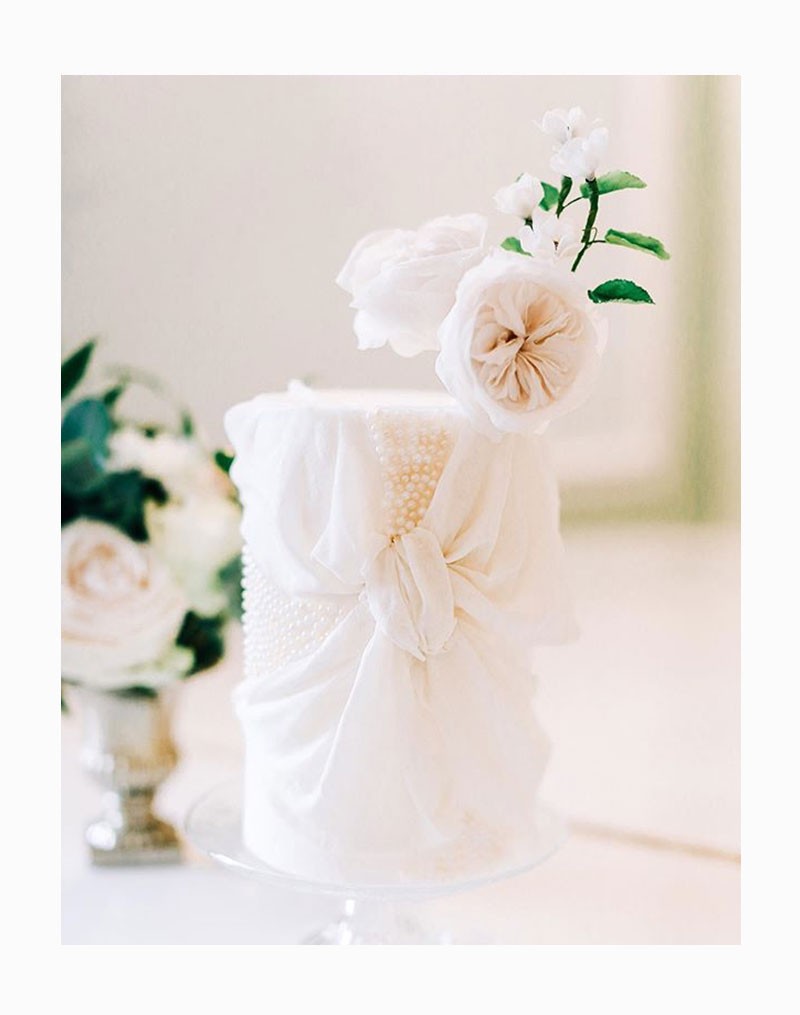
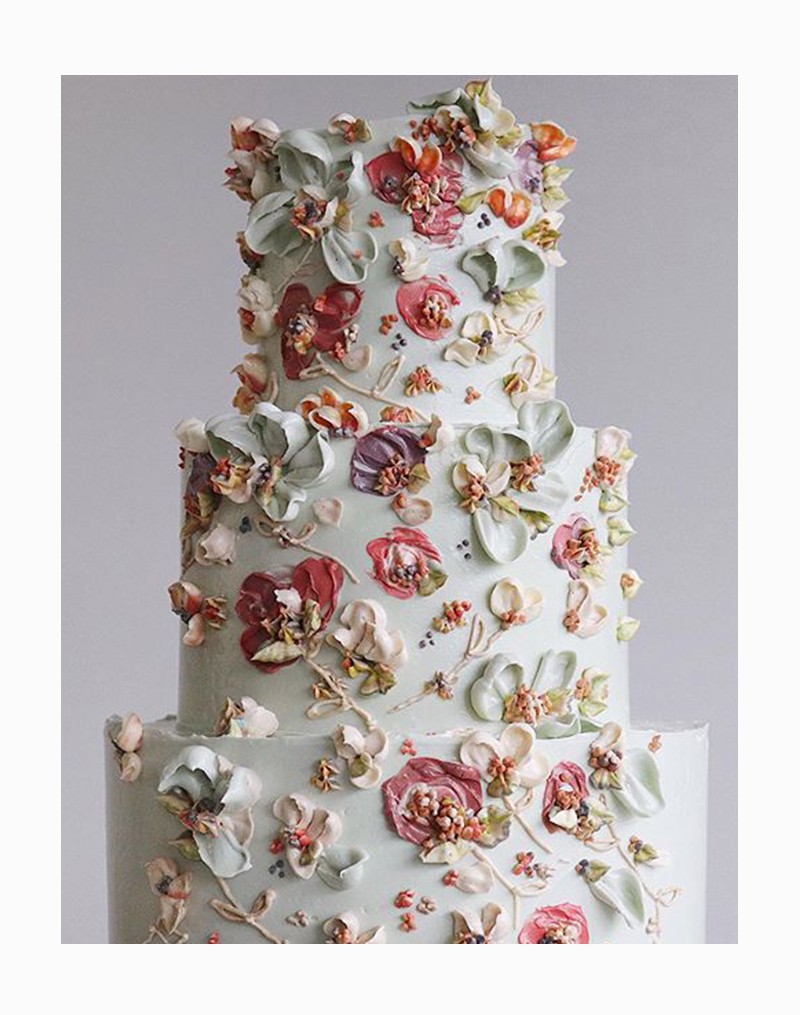
/https%3A%2F%2Fsheerluxe.com%2Fsites%2Fsheerluxe%2Ffiles%2Farticles%2F2020%2F07%2Fcove-cake-2.jpg?itok=jpnnz8LT)
